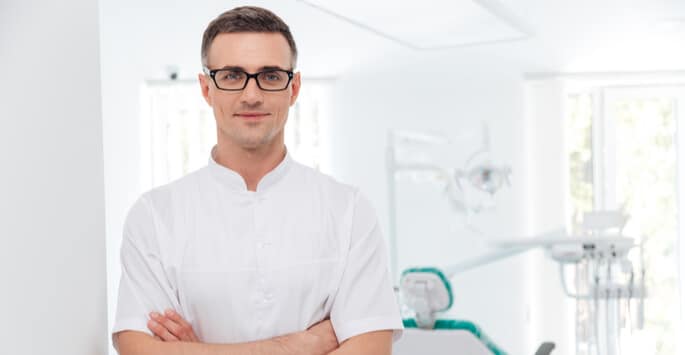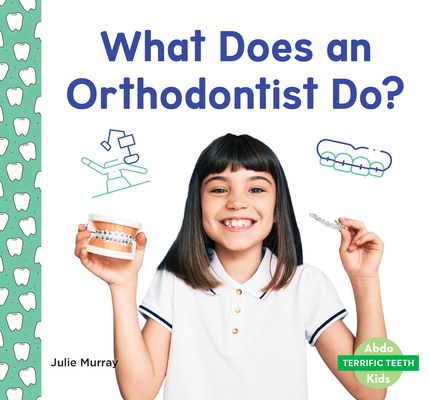Some Known Facts About Causey + Hall Orthodontics.
Wiki Article
The Best Guide To Causey + Hall Orthodontics
Table of ContentsThe Main Principles Of Causey + Hall Orthodontics Not known Factual Statements About Causey + Hall Orthodontics Causey + Hall Orthodontics - An OverviewThe Best Strategy To Use For Causey + Hall OrthodonticsCausey + Hall Orthodontics Fundamentals ExplainedAll About Causey + Hall Orthodontics
What is the difference in between a dentist and an orthodontist? To answer a concern that is often asked, both dental practitioners and orthodontists aid individuals get much better dental health and wellness, albeit in different means. It helps to bear in mind that dentistry is a rather wide scientific research with different medical field of expertises. All dental experts, including orthodontists, treat the teeth, gum tissues, jaw and nerves.Orthodontists and dental experts both offer oral care for clients. The primary distinction is that becoming an orthodontist requires a particular specialized in treating the misalignment of the teeth and jaw.
An orthodontist is a dental expert that has actually undertaken training to focus on the medical diagnosis, avoidance and therapy of irregularities in the jaw and teeth. Their training includes remedying these existing problems. They can additionally recognize potential troubles in teeth placement that might develop when problems are left neglected. Orthodontists can aid people of all ages - https://visual.ly/users/rickeynewberry/portfolio.
4 Easy Facts About Causey + Hall Orthodontics Shown
This consists of all the essential education and learning to become a general dental practitioner. According to the American Trainee Dental Organization (ASDA), it means you will need to have either a Medical professional of Medicine in Dental Care (DMD) or a Doctor of Dental Surgical Treatment (DDS). In various other words, orthodontists need to complete dental institution and then obtain an orthodontics specialty education.

When you have a healthy and balanced bite, you can speak, eat and eat appropriately, hence improving your quality of life. Other than the orthodontist, we typically see assistants collaborating with these dental specialists in their clinics. What is an orthodontist assistant called? They're appropriately referred to as orthodontic aides. They are specialized aides, and are trained to take care of oral gear and offer preventative oral healthcare.
What Does Causey + Hall Orthodontics Mean?
In addition, we offer flexible treatment schedules, adaptable repayment options and an enjoyable, pleasurable experience.An you could try here orthodontist is a dental expert trained to identify, stop, and treat teeth and jaw irregularities. They fix existing conditions and are trained to recognize troubles that might create in the future. Orthodontists collaborate with people of any ages, from kids to grownups. People often link an ideal smile with health.
All orthodontists are dental practitioners, but not all dental practitioners are orthodontists. Orthodontic residency programs offer intensive, concentrated guideline for oral specialists. They concentrate on 2 locations: Just how to properly and safely move teeth How to appropriately guide development in the teeth, jaw, and faceOnce an orthodontist has completed training, they have the alternative to become board certified.
Causey + Hall Orthodontics Fundamentals Explained
Misalignment, or malocclusion, is the most common reason people see an orthodontist - family orthodontist. It is hereditary and is the result of dimension distinctions between the top and reduced jaw or in between the jaw and teeth. Malocclusion results in tooth congestion, an irregular jaw, or irregular bite patterns. Malocclusion is generally treated with: Your orthodontist attaches steel, ceramic, or plastic square bonds to your teeth.
If you have only small malocclusion, you may be able to make use of clear braces, called aligners, rather than traditional braces. Some people need a headgear to aid relocate teeth right into line with stress from outside the mouth. After braces or aligners, you'll need to use a retainer. A retainer is a custom tool that keeps your teeth in area.
They can create additional room in the mouth without having to draw teeth. Orthodontists utilize cables, medical screws, or plates to support your jaw bone.
What Does Causey + Hall Orthodontics Mean?
During your initial orthodontic appointment, you'll likely have: An oral examPhotos taken of your face and smileDental X-raysPanoramic (360 level) X-rays of your face and headImpressions to produce molds of your teethThese tests will aid your orthodontist understand just how to wage your therapy. An orthodontist is a dental professional who's had training to treat your teeth and jaw.Orthodontists are dental professionals yet not all dental practitioners are orthodontists. Orthodontists are concentrated on your bite, or the way your teeth fit together, and the straightness of your teeth.
Not known Details About Causey + Hall Orthodontics
Ever before asked yourself just how celebrities constantly appear to have perfectly aligned teeth? The answer usually hinges on the experienced hands of an orthodontist - orthodontics. Yet exactly what does an orthodontist do? Orthodontists are dental professionals that concentrate on remedying irregularities in the teeth and jaws. Their proficiency goes beyond just producing a gorgeous smile; it reaches improving your overall oral wellness and feature.
Clear aligners, like Invisalign, are a popular option for patients seeking a much more very discreet therapy choice. These detachable trays are tailor-made to progressively shift the teeth's placement. Headgear may be made use of along with braces or aligners to use added targeted pressures, particularly for dealing with jaw inconsistencies. In cases of narrow jaws, palatal expanders can be utilized to create room for proper tooth positioning.
Report this wiki page